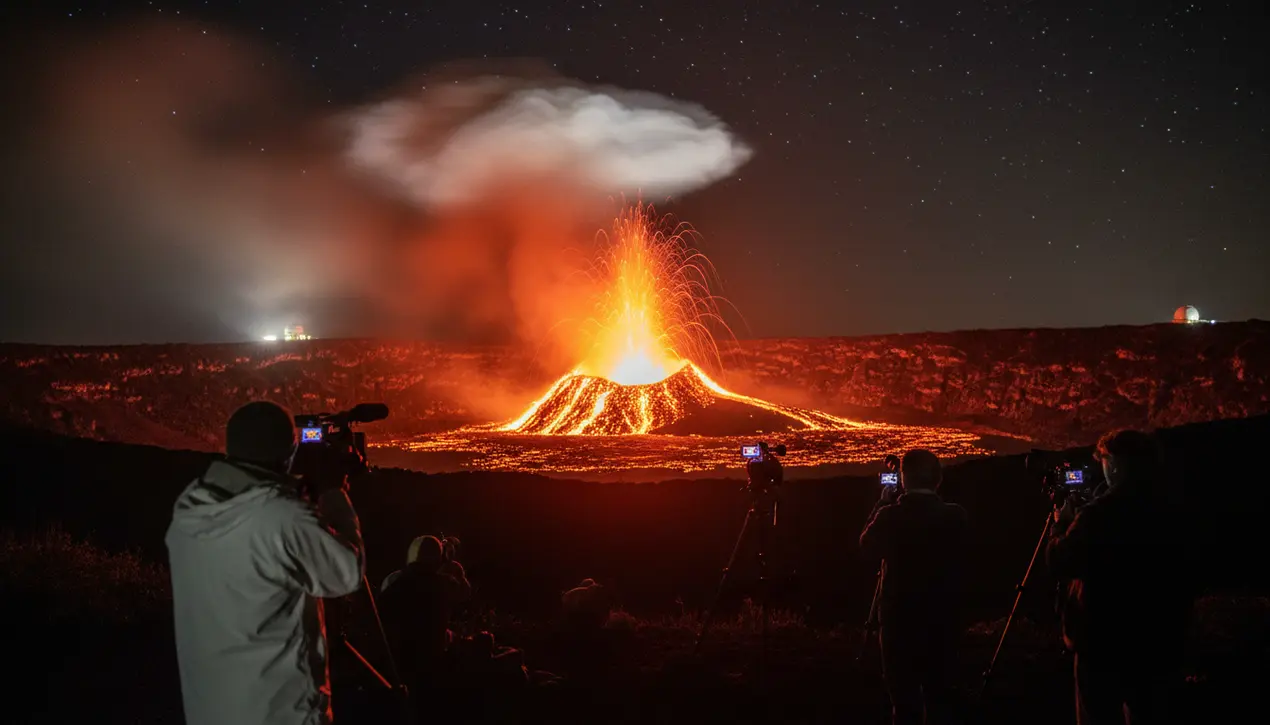
Scienceearth scienceVolcanology
Kilauea Volcano Erupts with Spectacular Lava Fountains.
TH
Thomas Green
7 hours ago7 min read5 comments
The Kilauea volcano is putting on a performance that would make even the most ambitious SpaceX launch look modest, erupting with a rhythmic intensity that has become its new normal since late last year. This isn't a chaotic, landscape-devouring event; it's a contained spectacle, a cosmic firework display safely ensconced within the Halemaʻumaʻu crater at its summit.Imagine a celestial foundry, where fountains of incandescent lava, reaching temperatures of nearly 2,200 degrees Fahrenheit, arc against the night sky in a brilliant, orange-red ballet. This ongoing activity is part of Kilauea's long and dramatic history, a volcano that has been continuously erupting since 1983, making it one of the most active on the planet.The current phase, primarily confined to the summit caldera, offers a relatively safe vantage point for scientists and the public alike to witness the raw power of planetary formation. For geologists at the Hawaiian Volcano Observatory, this is a golden age of data collection.They are meticulously tracking the subtle ground deformations, gas emissions, and seismic tremors that precede each new fissure, piecing together the predictive puzzle of the volcano's subterranean plumbing system. This isn't just about one mountain in the Pacific; it's a live case study in planetary volcanism, offering insights that could inform our understanding of volcanic processes on other worlds, from the ancient flows of Mars to the icy eruptions on Jupiter's moon Io.The lava fountains, while mesmerizing, are just the surface expression of a vast and complex system. They are fed by a deep-seated magma reservoir, a chamber of partially molten rock that periodically recharges from the Earth's mantle via a hot spot—a persistent plume of superheated material that has been building the Hawaiian island chain for millions of years.The current eruptions are a pressure-release valve for this system, and their semi-regular nature suggests a delicate equilibrium has been established, for now. However, the history of Kilauea is a testament to its unpredictability.The devastating 2018 lower East Rift Zone eruption, which reshaped the island's coastline and destroyed over 700 homes, is a stark reminder that this geological titan can change its tune without warning. The current calm, summit-focused activity provides a crucial breathing space for both research and community preparedness.Looking forward, the consequences of this eruptive phase are multifaceted. For the local economy, it's a double-edged sword; while the potential for destruction is ever-present, the draw of this accessible natural wonder is a significant tourist boon.Ecologically, the new lava is steadily filling the crater floor, creating new land that will eventually be colonized by pioneering species, initiating a centuries-long process of ecological succession. For science, every eruption adds another chapter to our understanding, helping to refine models that may one day provide earlier warnings for communities living in the shadow of volcanoes worldwide. Kilauea's spectacular fountains are more than just a show; they are a profound dialogue with the living Earth, a reminder of the dynamic and often beautiful forces that continue to shape our world.
#featured
#Kilauea
#volcano
#eruption
#lava fountains
#summit crater
#Hawaii
#geological activity
Stay Informed. Act Smarter.
Get weekly highlights, major headlines, and expert insights — then put your knowledge to work in our live prediction markets.
Comments
Loading comments...
© 2025 Outpoll Service LTD. All rights reserved.